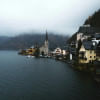Travelling and exploring a place by walking is a cost-effective, eco-friendly, and worthwhile experience. When you drive around, you do not get to experience the sights and sounds of a location. On foot, you find hidden treasures that you would not have otherwise found.
You can reflect, decompress, and establish a deeper connection with your environment while strolling.
There's a certain delight in just placing one foot in front of the other, whether you're strolling about your neighbourhood or exploring a new city. In May 2024, The Economist published a study surveying 794 cities to determine the most and least walkable cities.
Coauthor of 'Suburban Nation' Jeff Speck provided a thorough manual on walkability in his 2012 book 'Walkable City'. According to his "General Theory of Walkability," walking needs to be enjoyable, safe, practical and safe.
This manual and the cities listed in this study might prove useful for travellers who wish to save money on transport and travel on foot, exploring the sights on the way and taking in the community offers.
Here are the top 3 walkable cities that you will want to add to your travel bucket list.
The Mozambique seaport of Quelimane
The seaport of Quelimane, Mozambique, with a population of 350,000, is the most pedestrian-friendly on this survey. Due to its proximity to the coal mines in Tete province, Quelimane is not only an important agricultural export facility for the region but also a vital logistical transhipment port for the remote and landlocked provinces of the north.
The medium-sized port of Quelimane is located on the Bons Sinais River's eastern bank. The infrastructure provides the province of Zambezia with a quick sea route for exporting the area's commodities.
Peja, Kosovo
Peja boasts a wealth of historical sites that are easily accessible on foot. There are multiple pedestrian-friendly parks, squares, and public areas around the city. These places are enjoyable to relax and mingle in, enhancing the city's walkability.
The design of the city makes visiting sites like the Peć Bazaar, the Bajrakli Mosque, and the Patriarchate of Peć simple. Because of the city centre's compactness, you can effortlessly stroll between important sights, restaurants, shops, and cafes. This lessens the demand for transportation and allows you to explore the community and engage with the locals.
Additionally, there are designated pedestrian-only zones in and around the main squares and bazaar which makes walking safer and more fun.
The tree-lined canals of Utrecht in the Netherlands
Many guided walking tours of Utrecht are available and start in the town's historic centre, where the local guide shows you the key attractions of the city, including its architecture, arts, culture, and history, which spans the city's modest beginnings to its remarkable recent architectural resurgence.
The town's well-known Dutch canals allow you to stroll through its secret lanes, beautiful parks and gardens while taking in the immaculately preserved 17th-century gabled homes and serene, tree-lined canals that are home to a few Dutch houseboats.
A stroll along the main canals' busy shopping areas will reveal a plethora of posh restaurants, specialty boutiques, and art galleries. The old historic district's alleyways are full of amazing historical tales that provide fascinating insights into Holland's people and culture.









Comments